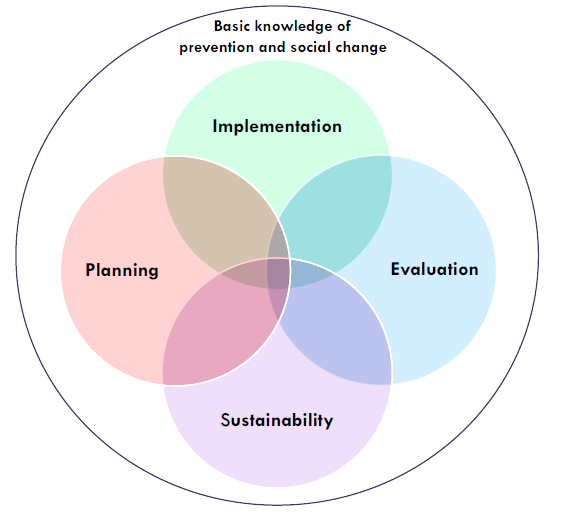Developing a new track to Building Change Together with an Equity Lens – Part Three: Youth Leadership
Written by the Partnership's Miranda Stiers
 Continuing the afternoon at our Building Change Together (BCT) Training, Ashley Spencer (California State University San Bernardino) and I developed a curriculum for Youth Leadership. In developing this session, we wanted to dive deeper into the discussion we began before on the concept of Adultism and Intergenerational Partnerships.
Continuing the afternoon at our Building Change Together (BCT) Training, Ashley Spencer (California State University San Bernardino) and I developed a curriculum for Youth Leadership. In developing this session, we wanted to dive deeper into the discussion we began before on the concept of Adultism and Intergenerational Partnerships.
In exploring youth leadership, we opened with a refresher on these concepts and talked with participants about what changes, if any, they made in their prevention efforts with youth. One participant shared that the training had inspired her to find funding to begin their own youth leadership program!
Through this session, we discussed leadership within the Primary Prevention Core Competencies framework:
- Foundations in Primary Prevention & Social Change: Basic knowledge in the prevention of domestic violence, teen dating violence and sexual violence—and how social change serves as the foundation of community-level prevention.
- Planning: This involves putting together a plan of action for organizations and individuals to implement a prevention initiative.
- Implementing: Implementing prevention is the process of organizations and individuals putting a prevention plan into action.
- Evaluation: Evaluation is at the core of ensuring that the prevention initiative is appropriate and likely to achieve the intended change. Evaluating prevention is the process of appraising a prevention initiative to determine:
- if it is being implemented as intended;
- if it is effective in achieving intended outcomes; and
- what improvements can be made to the initiative and the plan.
- Sustaining: Conducting prevention and changing social norms is a long-term investment. Sustaining prevention is the process of building a lasting infrastructure that will support ongoing development, and maintaining the efforts to create the change the prevention initiative was designed to achieve. It is also critical to build institutionalized mechanisms for nurturing and sustaining the capacity of new individuals and organizations to be able to implement and evolve the prevention strategies.

Together we explored shared power with youth, creating a space for youth to co-create the program, and engaging community stakeholders to deepen their prevention efforts.
Below are just a few resources we identified for Youth Leadership:
- Youth on Board – http://www.youthonboard.org/download
- True Colors Fund – https://truecolorsfund.org/our-work/training-education/network
- Close to Home – http://www.c2home.org/
- Green Dot – https://alteristic.org/story/
- Prevention Peer Network Webinar: Teens at the Table: How to start a Peer-to-Peer Mentoring Program – http://www.cpedv.org/webinar/teens-table-how-start-peer-peer-mentoring-program
Stay tuned for next week’s installment as we share resources and strategies on Engaging Men and Boys!
Is your organization looking to deepen how cultural responsiveness is practiced?
- The countdown to the Cultural Responsiveness Organizational Self-Assessment (CROS) tool re-launch is on! Soon, we’ll be offering a variety of customized support options for domestic violence agencies.




